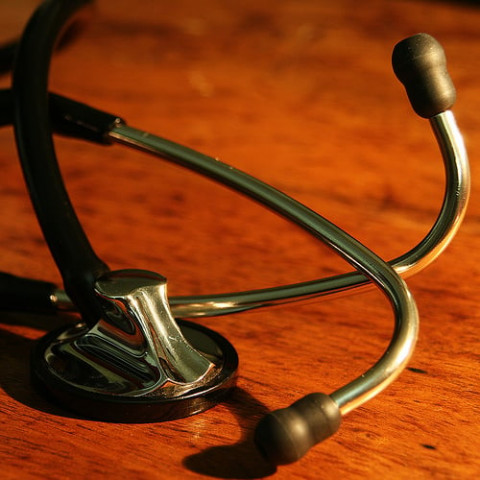Health survey: Health spending remains sluggish in FY2016-17
Total government spending pegged at Rs145.97 billion

Dean says such events are fundamental to cherishing a healthy, functional society. PHOTO: EXPRESS
The survey released on Thursday stated that Pakistan spent 0.27 per cent of its GDP in FY2011-12, 0.56 per cent in 2012-13, 0.69 per cent in 2013-14, 0.72 per cent in 2014-15, 0.76 per cent in 2015-16 and 0.46 per cent in 2016-17 (July-March).
Govt likely to slash health spending in next fiscal
During FY2015-16, total expenditure increased by 13 per cent over FY2014-15, and during the current fiscal year (July-March) 2016-17, the expenditure remained at Rs145.97 billion, showing an increase of 9 per cent over the same period of last year, it said.
The survey quoting a recent World Bank report said, currently Pakistan’s per capita health spending is $36.2 which is below the WHO’s low income countries benchmark of $86.
Health experts say actual allocation stands between 1.5 per cent and 2 per cent of GDP but the health departments concerned do not have capacity to spend it and this is happening since long.
“Against a meagre allocation, the government is not able to spend even the allocated amount: the reason being poor forecasting at the district level as the finance people are not capable enough of doing rational budgeting and they make budget estimates based on previous years’ spending,” said Dr. Asma Badar of the White Ribbon Alliance.
“The cumbersome financial processes hinder timely quarterly releases and they are not able to spend money within due time; hence, money goes back to the government.
“Besides, to kick-start any new initiative it takes longer than usual time in planning and hiring staff and starting intervening on ground.”
Healthcare continues downward slide
“Unnecessary postings and transfers from top to bottom tiers of bureaucracy also slow down interventions and releases and thus the budget remains unspent. To increase the health budget, the government is always concerned that in the wake of so much unspent budget why officials are proposing more allocation,” Badar said.
She also suggested that there needs to be rational distribution of the budget and the major chunk should go to primary healthcare instead of going into tertiary care and in procurement and infrastructure.
“The disease pattern is heavily dominated by malnutrition and poor dietary practices. Almost half of the population is suffering from high rates of malnutrition, particularly children and mothers,” the survey maintains.
Although the patient-to-doctor ratio has seen some improvement still today the doctor-population ratio stands at 1:997, dentist (1:10,658) and hospital bed (1:1,584).
While national health infrastructure comprises 1,201 hospitals, BHUs (5518), RHCs (683), dispensaries (5,802), maternity & child health centres (731) and TB centres (347), and the total availability of beds in these health facilities is estimated at 123,394.
The survey says immunization coverage has been increased and polio reported cases have been reduced. “Deaths from tuberculosis have been declining while child and maternal mortality rates since 2007 continued to improve.”
‘Sindh spends only 1% of health budget on nutrition’
Meanwhile, health experts termed it a sluggish improvement because the country had reduced it to the one-third level in the Millennium Development Goals. The improvement is not sufficient as pledged in the Sustainable Development Goals either.
Cancer
The survey reveals during the period July to December 2016, more than 0.46 million patients were registered at the Nuclear Medicine & Oncology (NM&O) hospitals under the PAEC Cancer Registry Programme (hospitals based) and benefitted from facilities in the fields of diagnostic/therapeutic nuclear medicine and clinical oncology (radiation & medical oncology).
The increasing incidence of diseases is due to lack of public awareness, change in lifestyle and environmental factors, the survey notes. “Pakistan Atomic Energy Commission’s cancer hospitals are providing diagnosis and treatment facilities to cancer patients. Currently, there are eighteen cancer hospitals functioning in different cities.”

















COMMENTS
Comments are moderated and generally will be posted if they are on-topic and not abusive.
For more information, please see our Comments FAQ